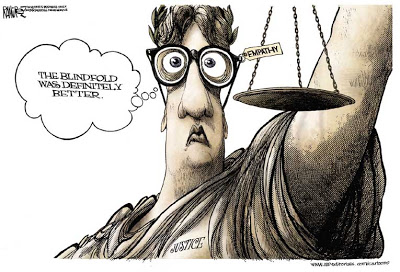
A monkey wrench in the Works.
Previous posts have followed the twists and turns of the lawsuit Juliana vs. US, initiated and funded by Our Children’s Trust. In November the Supreme Court signaled their desire that lower courts rein in the scope of the lawsuit. The District Court backed off and now the Ninth Circuit Court will take up the appeal in advance of any trial activity.
The latest development is the US government (the Appellant) making its initial filing Feb. 1, 2019, now available for public scrutiny.
The document is Appellants’ Opening Brief Excerpt in italics with my bolds.
SUMMARY OF ARGUMENT
The district court first erred when it denied the government’s motion to dismiss this action. It erred again when it denied the government’s motions for judgment on the pleadings and for summary judgment. This Court should reverse for any of the following independent reasons:
1. Plaintiffs cannot establish any of the three requirements for Article III standing. Plaintiffs have only a generalized grievance and not the required particularized injury because global climate change affects everyone in the world. They cannot demonstrate causation because climate change stems from a complex, world-spanning web of actions across all fields of human endeavor, and Plaintiffs cannot plausibly connect their narrow asserted injuries — like flooding or drought in their neighborhoods — to any particular conduct by the government. In addition, Plaintiffs’ alleged injuries are not redressable because a single district judge may not (consistent with Article III and the equitable authority of federal courts) seize control of national energy production, energy consumption, and transportation in the ways that would be required to implement Plaintiffs’ demanded remedies.
Separate and apart from Plaintiffs’ failure to satisfy the three standing requirements, this action is fundamentally not a case or controversy under Article III. Plaintiffs did not ask the district court to resolve anything resembling the kind of dispute that gave rise to jurisdiction at common law or the adoption of Article III; Plaintiffs instead asked the district court to review all of the representative branches’ programs and regulatory decisions relating to climate change over the past several decades and then pass upon their constitutionality in the aggregate. No federal court has the power to perform such a sweeping policy review, and no federal court has ever done anything close to what Plaintiffs seek here.
2. Plaintiffs have failed to pursue any claim under the APA or any other remedial scheme established by Congress for review of federal agency action or inaction. At its core, Plaintiffs’ action challenges a vast number of federal agency actions and inactions, yet Plaintiffs have refused to comply with the requirements of the APA. Plaintiffs may not circumvent Congress’s considered judgment to channel such challenges through the APA by asserting a right to proceed directly under the Constitution or the courts’ equitable authority; the existence of the APA forecloses those potential causes of action.
3. Even if Plaintiffs could satisfy the foregoing threshold requirements, their constitutional claims are baseless and must be dismissed. Plaintiffs’ alleged fundamental right to a “livable climate” finds no basis in this Nation’s history or tradition and is not even close to any other fundamental right recognized by the Supreme Court. Plaintiffs’ reliance on the state-created danger exception is also misplaced; there is no reason to extend that narrow doctrine to these circumstances. Plaintiffs’ equal protection and Ninth Amendment claims are also meritless.
4. Finally, there is no federal public trust doctrine that binds the federal government. Even if such a doctrine did apply to the federal government, any common-law federal public trust doctrine is displaced by statute. In any event, the atmosphere is not within any public trust. The orders of the district court should be reversed, and this case should be remanded with instructions to dismiss the complaint.
Summary:
What a concept! Let’s have judges decide national energy policy. And when the economy fails because energy supply is too expensive and unreliable, will the black robes be accountable to the public? Nope. And let’s turn a courtroom over to members of a doomsday cult for 50 days so they can persuade the public of their beliefs and fears. Even worse idea. Let’s hope even the Ninth Circuit can see the folly in this proceeding.
For background on the lawsuit see: Supremes Kick Kids Lawsuit Down the Road
For background on the false GHG Endangerment Finding see: GHGs Endangerment? Evidence?
 i
i